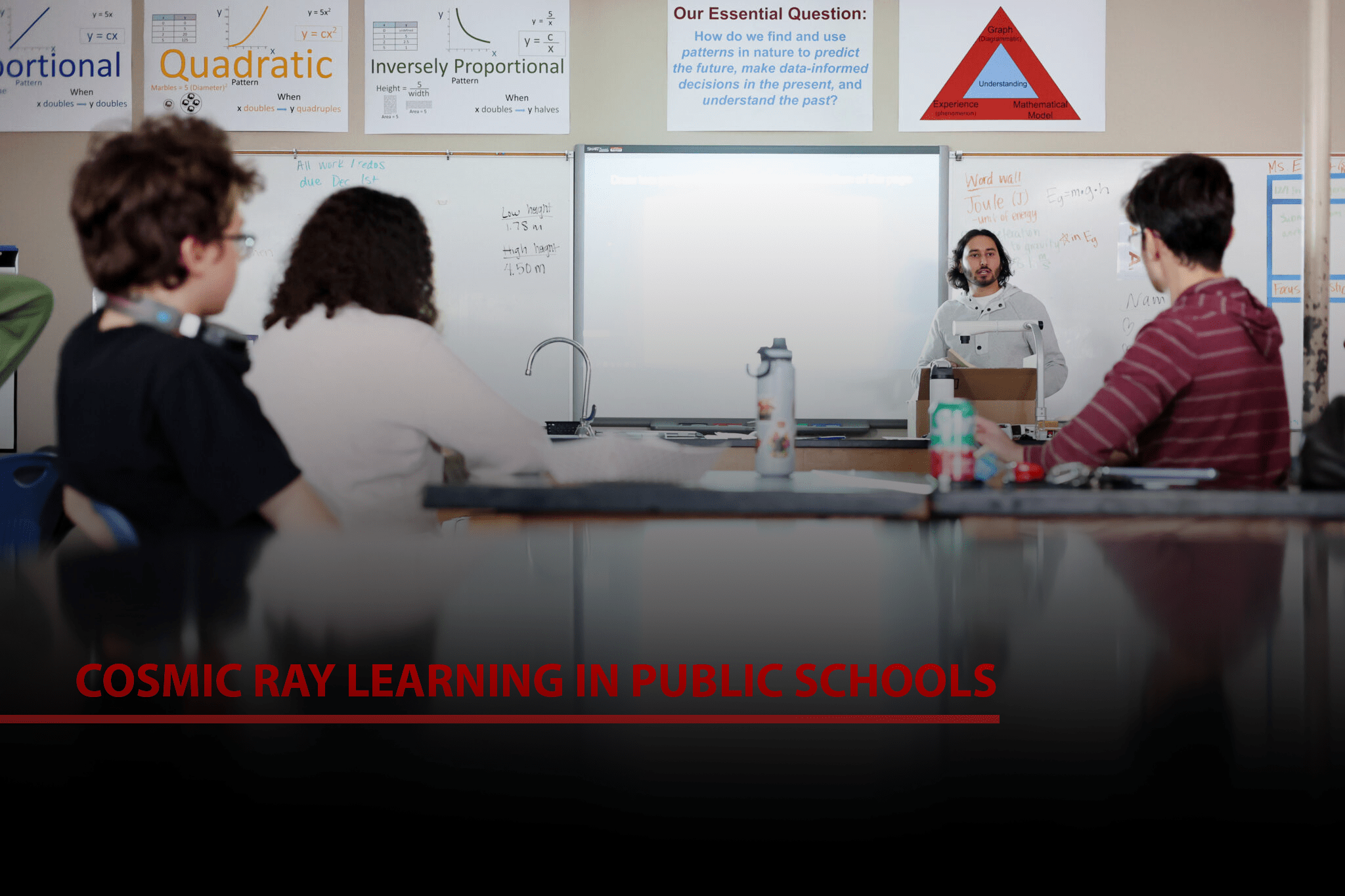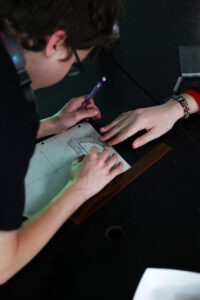
This page originally appeared in CoS
A cohort of teens at the Salt Lake Center for Science Education (SLCSE) is learning the principles of physics and computer programming by building detectors for cosmic rays.

The pilot program is led by U faculty member Tino Nyawelo, one of three recipients of the 2023 Spirit of Salam Award given annually on the birthday of the famed theoretical physicist from Punjab, Pakistan, Abdus Salam.
The program is an extension of the larger successful REFUGES initiative, designed to support refugee students entering Utah’s public school system, a transition that can often be difficult due to the age-based placement of schools. “[The students] couldn’t succeed in this [Utah public] school system because they spent years in refugee camps without any education,” says Nyawelo. “Since we can’t change the school system, we have to fill-in by providing additional support.” In addition to hands-on experience with science, the students are also provided with resources for personal health and wellness, college and career readiness and assistance applying for scholarships. Several students from the last cohort have received full-ride scholarships.
Nyawelo emphasizes the importance of this component: “For [students] to succeed, you need to address the costs of education. That’s why we have college and career readiness, and we have provided scholarships. They can be smart and all those kinds of things, but if you don’t support them and don’t provide all those resources, they may not be able to afford to come [to the U], for example.”
Beyond the unique opportunity to engage with real physics, ensuring a viable future path for its participants is one of the program’s vital elements.
Detectors for Cosmic Ray Science

The detector technology is adapted from HiSPARC (High School Project on Astrophysics Research with Cosmics), a program co-founded by physicists Bob van Eijk and Nyawelo’s former advisor Jan-Willem van Holten, a theoretical physicist at Nikhef (the Dutch National Institute for Subatomic Physics) with whom Nyawelo continues to collaborate to this day. Van Holten and a number of researchers who worked on the HiSPARC project have flown to Utah several times to help Nyawelo adapt the program in its new digs in the Mountain West. “I still have a big connection with the Netherlands,” says Nyawelo. “Van Holten, van Eijk, and their colleagues at Nikhef have donated a lot of the equipment to work and build cosmic ray detectors with high school students here in Utah, and they handed me the project that they started more than 20 years ago.”
After the detectors are installed at SLCSE and begin collecting data, there is a continual opportunity for the students to learn coding skills and data analysis as part of their physics and astronomy curriculum. The database is an international one, with data dumps coming in from all over the world, in real-time. The program is designed to scale up to other high schools throughout the state so that students can have hands-on experience collecting and analyzing data about cosmic rays globally. “It’s been an exciting project that can serve as a model for other places that want to support students from these backgrounds to succeed in STEM in higher education, just like I did while attending the ICTP [Abdus Salam International Centre for Theoretical Physics in Italy] and in the Netherlands.”
Generous support for the pilot program at SLCSE was provided by Jeff and Pauline Unruh through the Unruh Family Foundation. “Our foundation focuses on STEM disciplines and inspiring young minds. [This] is a perfect example. We’re proud to support the next generation of scientists,” says Jeff. “With his commendable dedication to this program, Nyawelo has ensured that these students will walk away not just with extensive hands-on experience in STEM, but also with the tools to succeed in their lives beyond the classroom, fostering a brighter and more accessible future for science.”
By Julia St. Andre
